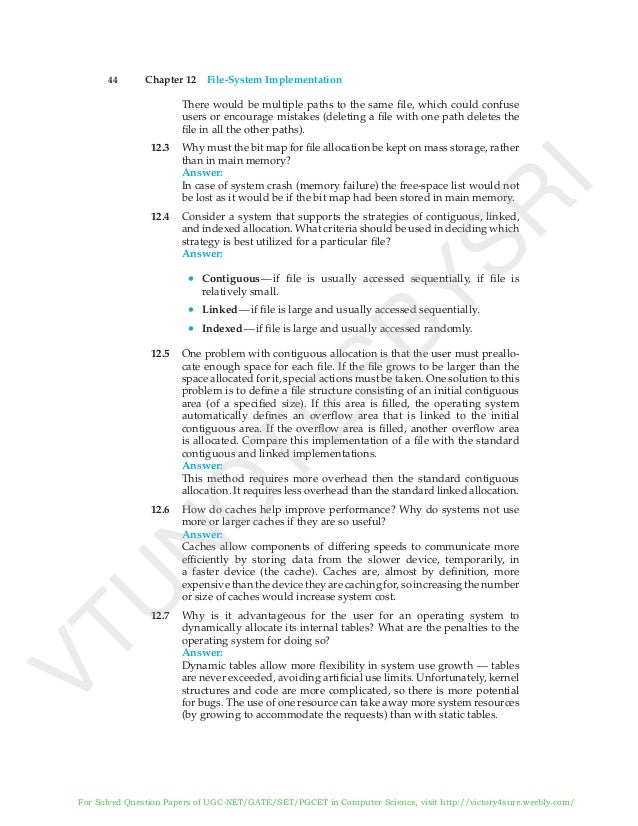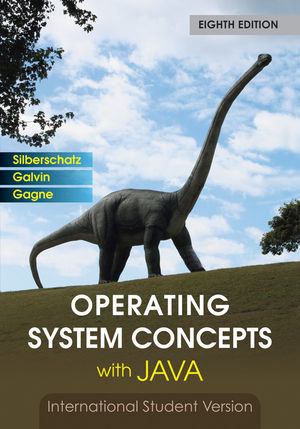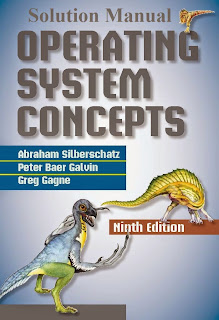Operating System Concepts Solution Manual 9Th
OPERATING SYSTEM CONCEPTS BY ABRAHAM SILBERSCHATZ from Yale University,PETER BAER GALVIN from Pluribus Networks and GREG GAGNE From Westminster College Preface We have also made substantial organizational changes. For example, we have eliminated the chapter on real-time systems and instead have integrated appropriate coverage of these systems throughout the text.
Filip (24 Feb 2016, 20:29). Downloaded the game from 2 links and from both games it shows and error.Cant play it says the imagine earth has stop working. Problem Event Name: APPCRASH Application Name: ImagineEarth.exe. Application Version: 0.19.0.2724. Application Timestamp: 56af34ed. You should have. Dec 17, 2017 - Download KeeperRL here: KeeperRL is an ambitious dungeon simulator with roguelike and RPG elements. Eminem Get The Guns Rare more. Take the role of an evil wizard and study the methods of black magic. Equip your minions and explore the world, murder innocent villagers and burn their homes. It's nice that you sort of put a demo out there, but honestly the demo you have is completely obutse to me, and many others probably, because of the lack of graphical sprites. Keeperrl Download 2016 - Full Version. Jan 30, 2015. Check the video below and the changelist for details. The free and paid versions are available. Keeperrl 2016 full version.
Operating System Concepts Solution Manual, now in its ninth edition, continues to provide a solid theoretical foundation for understanding operating systems. In this Solution Manual all exercises are solved of Operating System Concepts ninth edition. Operating System Concepts Ninth Edition Avi Silberschatz Peter Baer Galvin Greg Gagne John Wiley & Sons, Inc. ISBN 978-1-118-06333-0 Face The Real World of Operating Systems Fully Equipped. Welcome to the Web Page supporting Operating System Concepts, Ninth Edition. This new edition, published by John Wiley & Sons, became available on December.
We have reordered the chapters on storage management and have moved up the presentation of process synchronization so that it appears before process scheduling. Most of these organizational changes are based on our experiences while teaching courses on operating systems. Below, we provide a brief outline of the major changes to the various chapters:.
Chapter 1, Introduction, includes updated coverage of multiprocessor and multicore systems, as well as a new section on kernel data structures. Additionally, the coverage of computing environments now includes mobile systems and cloud computing. We also have incorporated an overview of real-time systems. Chapter 2, Operating-System Structures, provides new coverage of user interfaces for mobile devices, including discussions of iOS and Android, and expanded coverage of Mac OS X as a type of hybrid system. Chapter 3, Processes, now includes coverage of multitasking in mobile operating systems, support for the multiprocess model in Google’s Chrome web browser, and zombie and orphan processes in UNIX. Chapter 4, Threads, supplies expanded coverage of parallelism and Amdahl’s law. It also provides a new section on implicit threading, including OpenMP and Apple’s Grand Central Dispatch.
Chapter 5, Process Synchronization (previously Chapter 6), adds a new section on mutex locks as well as coverage of synchronization using OpenMP, as well as functional languages. Chapter 6, CPU Scheduling (previously Chapter 5), contains new coverage of the Linux CFS scheduler and Windows user-mode scheduling. Coverage of real-time scheduling algorithms has also been integrated into this chapter. Chapter 7, Deadlocks, has no major changes. Chapter 8, Main Memory, includes new coverage of swapping on mobile systems and Intel 32- and 64-bit architectures.
A new section discusses ARM architecture. Chapter 9, Virtual Memory, updates kernel memory management to include the Linux SLUB and SLOB memory allocators. Chapter 10, Mass-Storage Structure (previously Chapter 12), adds coverage of solid-state disks. Chapter 11, File-System Interface (previously Chapter 10), is updated with information about current technologies. Chapter 12, File-System Implementation (previously Chapter 11), is updated with coverage of current technologies. Chapter 13, I/O, updates technologies and performance numbers, expands coverage of synchronous/asynchronous and blocking/nonblocking I/O, and adds a section on vectored I/O.


Preface xi. Chapter 14, Protection, has no major changes. Chapter 15, Security, has a revised cryptography section with modern notation and an improved explanation of various encryption methods and their uses.
Operating System Concepts Solution Manual 9th Class
The chapter also includes new coverage of Windows 7 security. Chapter 16, Virtual Machines, is a new chapter that provides an overview of virtualization and how it relates to contemporary operating systems. Chapter 17, Distributed Systems, is a new chapter that combines and updates a selection of materials from previous Chapters 16, 17, and 18. Chapter 18, The Linux System (previously Chapter 21), has been updated to cover the Linux 3.2 kernel. Chapter 19, Windows 7, is a new chapter presenting a case study of Windows 7.
Chapter 20, Influential Operating Systems (previously Chapter 23), hasno major changes.

The ninth edition of Operating System Concepts continues to evolve to provide a solid theoretical foundation for understanding operating systems. This edition has been updated with more extensive coverage of the most current topics and applications, improved conceptual coverage and additional content to bridge the gap between concepts and actual implementations. A new design allows for easier navigation and enhances reader motivation. Additional end-of-chapter, exercises, review questions, and programming exercises help to further reinforce important concepts. WileyPLUS, including a test bank, self-check exercises, and a student solutions manual, is also part of the comprehensive support package. The computer science textbook is for a junior or senior undergraduateor first-year graduate course on creating operating systems. Students are assumed to be familiar with basic data structures,computer organization, and a high-level language like C or Java.
The overall themes are overview, process management, memory management,storage management, protection and security, advanced topics, and case studies. This ninth edition recognizes the recent growth in multicore systems, mobile computing, and virtualization.Annotation ©2014 Ringgold, Inc., Portland, OR (protoview.com) Synopsis. Operating System Concepts, now in its ninth edition, continues to provide a solid theoretical foundation for understanding operating systems. The ninth edition has been thoroughly updated to include contemporary examples of how operating systems function. The text includes content to bridge the gap between concepts and actual implementations. End-of-chapter problems, exercises, review questions, and programming exercises help to further reinforce important concepts.
A new Virtual Machine provides interactive exercises to help engage students with the material. Table of Contents.